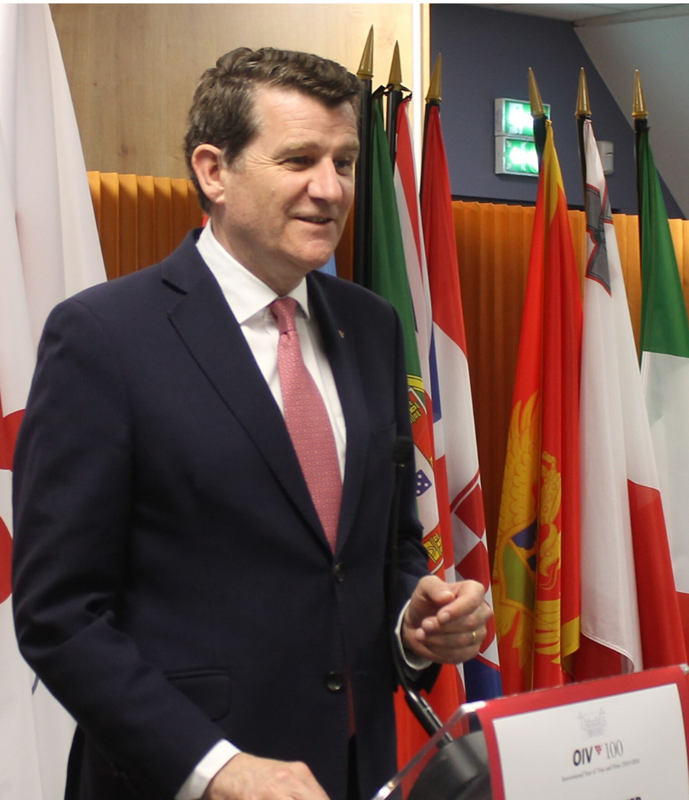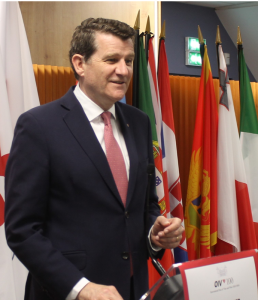
John Barker, Director General OIV addressing the Press Conference

John Barker, Director General OIV addressing the Press Conference
Posted:Monday, 29 April 2024 09:00

According to an OIV Report which analyzed ail, the evolution of the wine industry by colour, Red Wine market has seen a marked drop of 5%, to 43% in 20 years, reflecting perhaps in India too, though to a lesser extent. The shift has been marked in France which produces 50% less red wine than at the beginning of the century. However, non-European producing countries, such as Chile, Argentina, Australia, the US, and South Africa have shown positive growth rates.
Among the top 10 countries with the highest percentage of red wine in their national wine production, 7 are from outside Europe. In 2021 overall production declined by 25% since its peak in 2004.
White wine
White wine production has been going up steadily in this century, going past the red wine production in 2013- going up from 46% at the beginning of the century, to 49%.in recent years.
The main countries that contributed to growth in production globally are Italy (thanks to Prosecco), the US, South Africa, and Australia. Some of the large white wine-producing countries such as France and Spain maintained the steady levels. The increase in demand for white wine is mostly driven by three important sparkling wine markets: the USA, Germany and the UK.
Rosé Wine
Rosé has expanded significantly as a wine category, with production and consumption growing by 25% in 2001- 2021. At the turn of the century, rosé wines represented between 6 and 7% of the world’s production and now account for over 8%.
Production areas are more concentrated, with France leading production and consumption. The top 10 producing countries represented almost 90% of the world in 2021 whereas the top 3 accounted for two-thirds. Northern Hemisphere countries lead the growth, even though countries like Chile and South Africa have also shown very high growth rates in the last 20 years.
The growth of the rosé market can be mainly attributed to an increase in demand in the UK, Germany and the US. France is by far the biggest market, consuming more than a third of the global market.
Global Production
OIV has estimated the world wine consumption in 2023 at 221 million hA, down 2.6 per cent from 2022, and 7.5 per cent from 2018. OIV further lowered its estimate for last year from an initial estimate of 244 million hL to 237 million hL, a drop of 10 % from the 2022 levels, which is lowest in over 60 years. According to OIV, the world production was the lowest since 1996.
Italy produced its lowest wine vintage since 1950 at 38.3 million hL, down more than 23 per cent on the previous year, thereby losing its wine-making leadership to France. China was particularly hit by the fall which touched 25% last year. Poor weather, including early frost and heavy rainfall and drought, widespread fungal diseases in both the Northern and Southern Hemispheres are further ascribed as the notable reasons.
Several factors were responsible including Global Warming but the instability due to the Russia- Ukraine war causing disruptions in the global supply chain, higher production and distribution costs, resulting in significant price increases for wine consumers that resulted in drop in demand are important factors for the fall.
Celebrating 100 years of OIV (1924-2024), the Presentation was made by the Director General of OIV, John Barker from the new Headquarters in Dijon to which it has moved from Paris. It is an annual ritual to present the State of the World Vine and Wine Sector and was made through a web Press Broadcast on 25 April at 8 pm CEST.
For details, click https://www.oiv.int/press
Subhash Arora
